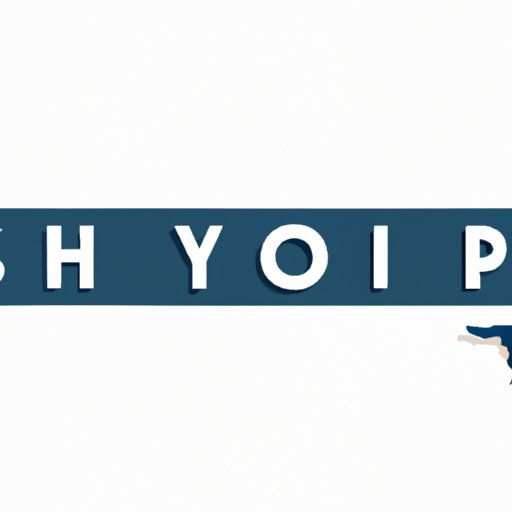
Creating A Logo: Simple Steps to Effective Branding
When building a brand, having a strong and professional-looking logo can make all the difference. It serves as the face of your business and is often the first impression that customers have of your company. In this article, we will explore the process of creating a logo, design trends, software options, the psychology behind logo design, the differences between a brand identity and a logo, and mistakes to avoid when designing your logo. By the end of this article, you’ll have the knowledge and tools you need to create a logo that effectively represents your brand.

5 Simple Steps to Create a Logo for Your Brand
Designing a logo may seem overwhelming, but by breaking it down into these five simple steps, it becomes much more manageable:
Ideation:
The first step in creating a logo is ideation. Before anything else, brainstorm a list of words or phrases that represent your brand. These words will be used as a base for designing your logo.
Research:
Once you have a list of words describing your brand, perform research and gather inspiration from your market, competition, and audience demographics. This step will help you refine your ideas and make informed decisions.
Sketching and Digitizing:
After gathering inspiration, sketch out ideas that embody your brand words. Once you have a solid idea of what you want, use graphic design software to digitize the design.
Refine:
In the refinement phase, you will refine the design by making final adjustments to the colors, typography, and layout. You should also receive feedback from others before completing this phase.
Implementation:
Once you have a finalized design, it’s time to implement your logo across multiple platforms, such as web and print. Make sure your logo is easily scalable and adaptable to different formats.
Logo Design Trends You Should Know About
Logo design trends are continually changing, so staying up-to-date is crucial when building a recognizable brand. Here are a few of the latest trends in logo design:
Simplification:
Many companies are simplifying their logos, moving towards minimalist designs to stand out in a crowded marketplace.
Hand-Drawn:
Hand-drawn logos are gaining popularity because their authentic feel provides a unique personal touch.
Typography:
Typography is a significant trend in logo design because it can create a high visual impact. Many companies focus on developing custom typography unique to their brand.
The Psychology of Logo Design
Subtle differences in color, shape, and typography in your logo design can have a significant impact on consumers. Here’s how:
Color:
Colors evoke different emotions and can affect how customers associate with your brand. For example, warm colors like red and yellow can evoke a sense of excitement, while cooler tones like blue and green suggest a calm and trustworthy experience.
Shape:
The shape of your logo can also evoke certain emotions in customers. Circles and ovals can represent unity and community, while squares and rectangles convey order and stability.
Typography:
The font you choose for your logo plays a crucial role in how consumers perceive your brand. Serif fonts represent tradition and respectability, while san-serif fonts are modern and dynamic.
Best Logo Design Software of 2021
When it comes to choosing graphic design software, it’s important to consider the features that will help you attain your desired outcome. Here are some of the best logo design software tools to consider:
Adobe Illustrator:
Adobe Illustrator is a professional industry-standard software. It is most used by professional graphic designers due to its advanced features.
Canva:
Canva is a free design software and offers a variety of easy-to-use templates. This software is beginner-friendly and is perfect for simple design projects.
Sketch:
Sketch is a perfect tool for designing logos for websites, mobile apps, and interfaces. It has an intuitive interface, and its vector editing capabilities are focused on web design.
Brand Identity vs. Logo: Knowing the Differences
It’s essential to understand the distinction between a brand identity and a logo. The brand identity is the messaging, mission, and voice behind a company, while the logo is the visual representation of that identity. Here are some examples of strong brands with unique brand identities and logos:
Nike:
Nike’s messages of inspiration and motivation define its brand identity. The iconic “swoosh” furthers the Nike message by exuding speed, motion, and strength.
Apple:
Apple is often associated with innovation, simplicity, and elegance. Its famous minimalist logo, an apple with a bite taken out of it, embodies the brand’s core values.
Mistakes to Avoid When Creating Your Logo
There are some common mistakes you should avoid when creating your logo. Here are a few:
Using Too Many Colors:
Limit your logo color palette to a maximum of three distinct colors, or the image will become unclear and cluttered.
Overcomplicating the Design:
Overcomplicating your logo’s design can lead to visual confusion and lack of recognition. It’s best to keep it simple, clean, and memorable.
Not Scalable:
When designing your logo, make sure it is scalable and adaptable to different formats and sizes. Don’t use intricate details or small elements that won’t translate well to a smaller size.
Conclusion
Creating a logo that represents your brand is a crucial part of building your business’s image. Understanding the science of logo design, design trends, and what mistakes to avoid will result in a professional-looking logo that stands out from the competition. So, start brainstorming, researching, and designing. With the right steps, tools, and inspiration, your logo will soon become the face of your successful brand.





